HPE ProLiant RL300 Gen11 Power Consumption
In terms of power consumption, that is perhaps where the HPE ProLiant RL300 shines. Here is a screenshot of iLO 6 with the server idle. One can see a 136W average. That is fairly good for a 128-core server (~64-core EPYC or Xeon equivalent.)
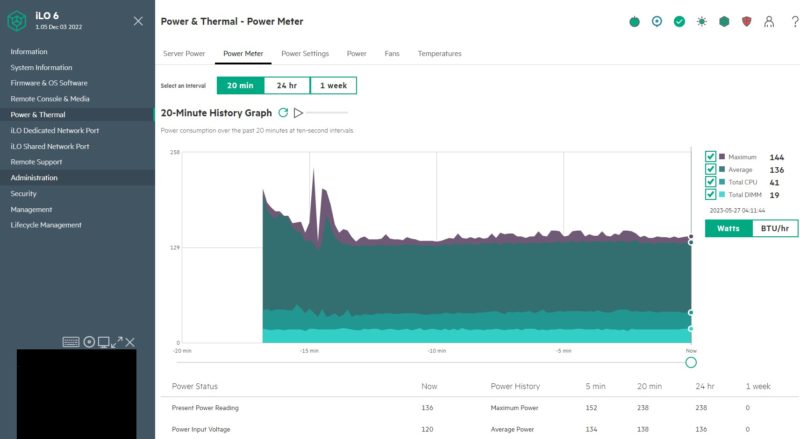
The maximum power in the screenshot of 352W was a bit low. We ended up recording closer to 400W at the PDU.
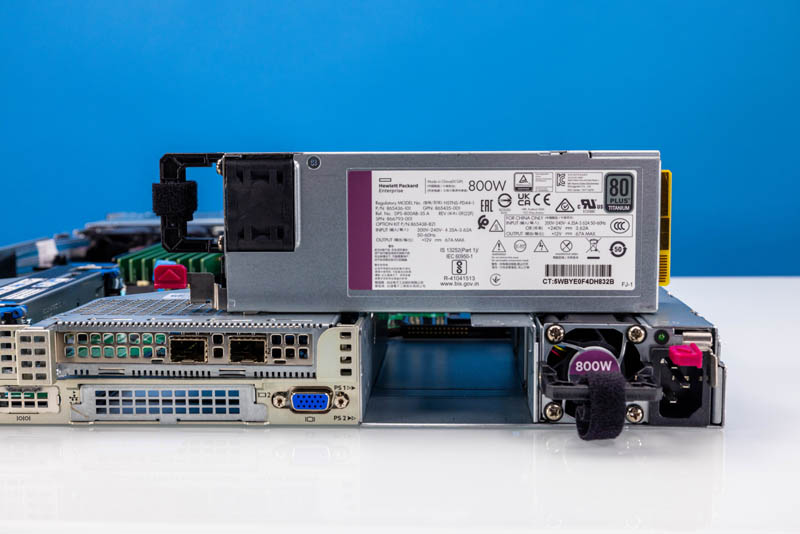
Frankly, the efficient 80Plus Titanium power supplies at 800W were overkill for this system even if we had added more NICs and storage.
STH Server Spider HPE ProLiant RL300 Gen11
In the second half of 2018, we introduced the STH Server Spider as a quick reference to where a server system’s aptitude lies. Our goal is to start giving a quick visual depiction of the types of parameters that a server is targeted at.
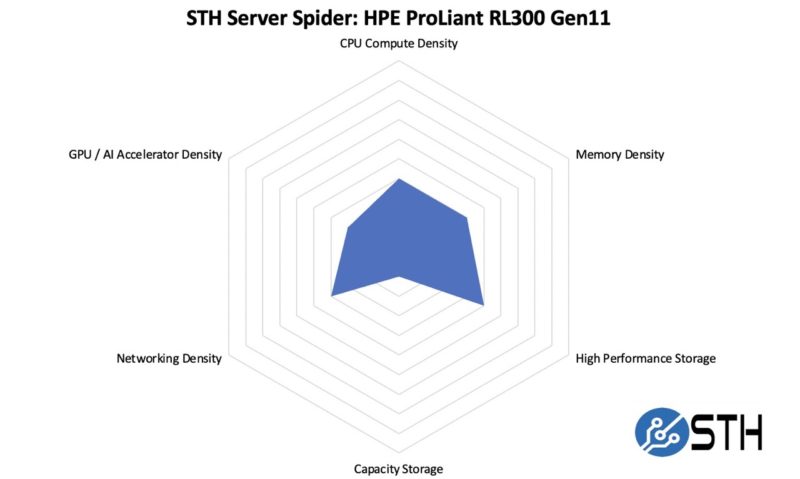
One marketing message that Ampere promotes is that its chips are for dense systems. The RL300 Gen11 is perhaps the opposite. As a 1U server, it is designed to fit in a particular power envelope, but it is less dense than dual-socket systems. That makes sense and is a hallmark of this style of machine which has become popular. If you want to put the maximum number of 2.5” drives, 3.5” drives, GPUs, PCIe expansion cards, memory, and more HPE has other ProLiant options. This is designed more as a general-purpose 1U Arm compute server to fill the role of a cloud-native server role.
Final Words
When we first heard about the HPE ProLiant RL300 Gen11, we were extremely excited. Arm is becoming a bigger force in the data center beyond traditional Arm server vendors like Huawei. Even NVIDIA has HPC-focused Grace and Grace Hopper Arm-based chips. Having a major US server vendor sell Ampere Altra-based servers is great and it shows a willingness to listen to its customers. We are a little surprised that Lenovo does not have an Arm offering. Dell has taken up the role more as a slow follower on adopting new and important architectures (e.g. adopting the ultra-popular 8x NVIDIA GPU AI configuration with Dell PowerEdge XE9680 8x NVIDIA H100 server.) While this may seem like a cost-optimized HPE ProLiant solution, that is precisely the point.
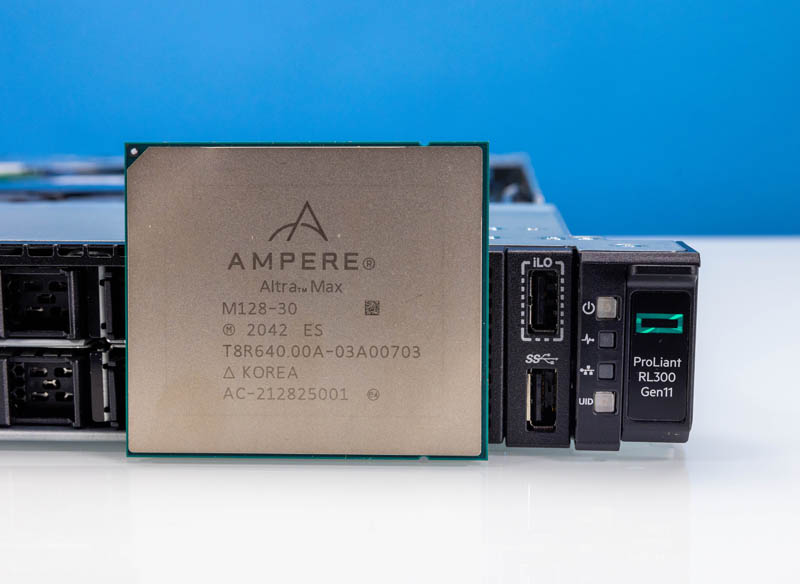
Overall the system performed in line with other Ampere Altra Max 128 core systems. It also ran stable with 16 DIMMs with 2 DIMM per channel operation. That in no small feat on a new platform, so great job to the HPE and Ampere teams on this one. Installing Ubuntu and various Arm-optimized stacks such as nginx work out of the box without the older compatibility challenges. That said, if you have specialized software that only runs on x86, this is the wrong application. HPE’s recognition is that there is now a lot of software that works on Arm and so this platform works for a large portion of the market.
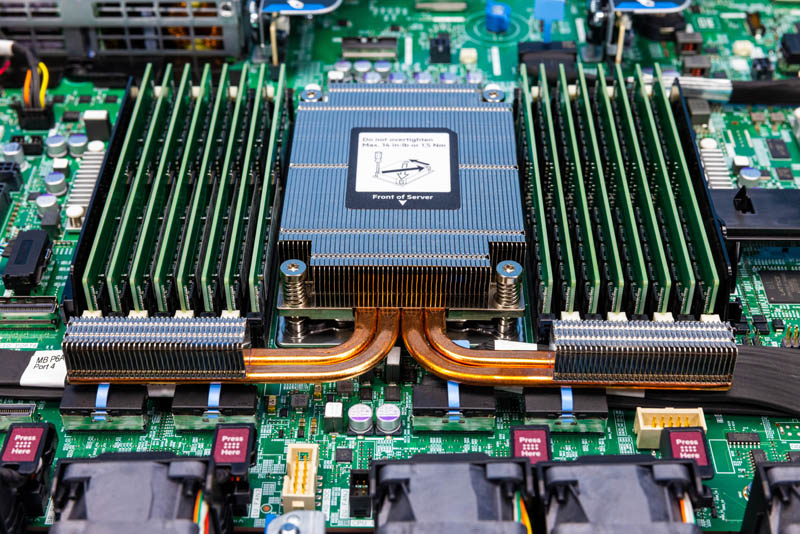
Overall, if you are a cloud-native and Arm-curious HPE ProLiant customer this is the server to get. It may adopt a non-x86 architecture, but at the same time, HPE has made the RL300 thoroughly ProLiant.




Nice review
“Having a major US server vendor sell Ampere Altra-based servers is great and it shows a willingness to listen to its customers”
Do enterprise customers really want ARM chips. They are usually more conservative than hyperscale customers and cost benefits have to be bigger to make them choose ARM servers.
That’s a great review. I’ll share it with our team. We aren’t a huge customer $20-30m in annual spend, but we’ll at least look at these for a small cluster this year to try.
It’s funny. Dell tried coming into our account with IDC and some white paper recycling bin collateral. They still haven’t had the ah ha that we read STH but we don’t look at that garbs.
2 things I found kind of confusing.
1) What do Storage Subsys failures have to do with Screws?
HPE replacement drives already come with caddies, so you aren’t swapping bare drives in/out of the caddy anyway, so why does a screw-based design matter?
2) You mentioned the Dell XE9680, did they not have such a machine before?
HPE has had the Apollo 6000/6500 and now the Crazy XD600 all with this same 2P/8SXM design.
Grrrr Spell Check – CRAY XD600
No mention if this meets HP certified supply chain requirements.
If not, this server will never see the inside of any datacenter where security is paramount.
The last time when one of the ARM vendors were bragging about how prevalent they were with some cloud operators, we checked and how were they used? As batch processing and storage managers. Any compute?
“No, we don’t use them for that internally, only if a client demands it…so we put a few on the wire to let people give them a run”.
What a farce.
Can’t find an actual listing with price. Maybe it is vaporware?
Could really use direct shopping link.